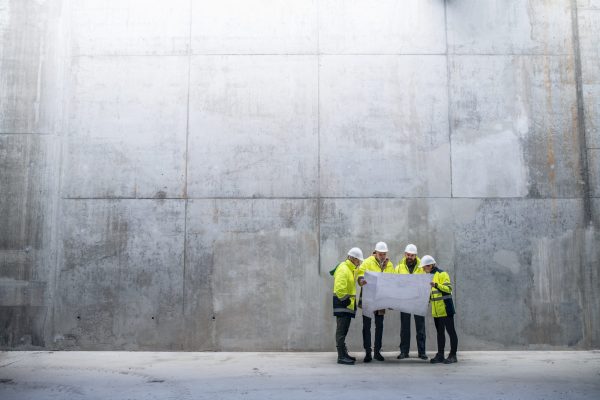The significant key differences between residential and commercial construction.

If you’re planning to invest in developing real estate, one of the questions you need to ask yourself is whether you want to build residential or commercial properties. These two types have significant differences, particularly in terms of construction.
Aside from that, you also have to find the best team to help you fulfill your vision. You must first have a clear answer to the question above so that you can find contractors who specialize in that area. For instance, Diversified Construction is a commercial builder with extensive experience in constructing offices and restaurants.
Here are the key differences between residential and commercial construction if you’re still weighing the two options:
1. Building Materials
One of the primary differences between developing residential and commercial properties lies in the materials used for construction. Timber is the material of choice for the former since it’s considered as cost-effective for smaller buildings while still maintaining the structure’s quality. You may have noticed that complexes and subdivisions put up timber frames at the beginning of the project.
Commercial developments, on the other hand, typically have more complex designs and requirements. For this type of construction, steel frames are generally used because the material is more resilient. It also has the strength to support taller and larger buildings while ensuring longevity.
When talking with a contractor, regardless of whether you opt for developing residential or commercial properties, they should be able to give details on the materials and techniques that they plan on using for the project. Also, determine the type of steel that they propose on utilizing and research on its quality.
2. Codes And Permits
You need to have the necessary licenses and permits if you’re planning on constructing residential or commercial buildings. You should also know the specific documents that you have to comply with to avoid any legal entanglements prior to the beginning of the project.
Both types of construction must adhere to building regulations set by the state and local governments. Nonetheless, commercial projects typically require more codes and permits because of the use and makeup of the building. This type of property development entails complex structure subsections, such as lift access, power solutions, parking areas, and garages.
For these types of projects, the contractor usually files the permit on your behalf. They already factor in the labor cost for this aspect in their bid.
3. Equipment
As mentioned above, developing commercial properties involve more complex processes, so it generally requires more heavy equipment. This project will typically entail the use of high-powered machinery for the volume of the work and large cranes to accommodate the height of the building.
Meanwhile, residential developments, even the ones that are considered large, don’t usually require specialized equipment. Standard machinery is sufficient for the project’s scale.
These are a few of the typical equipment used in both residential and commercial construction:
4. Schedule
Commercial development projects also take more time to finish because they cover a massive land area with complex subsections. However, this type of construction has a more stringent schedule in order to meet business deadlines. It also ensures maximum efficiency for greater profits.
5. Cost
Because of its size, commercial construction requires a higher capital, unlike when you’ll just be building your own home. If you’re planning on investing in this type of development project, you might need to look for supplementary funding, such as from bank or government agencies, or pool your resources with other investors, like real estate investment trusts (REITs). With residential construction, you can easily get financial aid from the government or from financial institutions, like banks and other types of lenders.
Conclusion
There are significant differences in residential and commercial construction. The latter project entails the use of more building materials and equipment, as well as filing more permits, which leads to a higher capital requirement. While it may take longer to complete, this type of development also follows a more stringent schedule due to business demands.

Keannu Langley
Keannu Langley writes articles about different business industries such as construction, and manufacturing. Keannu aims to help startup and new entreprenuers to progress in their new businesses.
Scott Ellyson, CEO of East West Manufacturing, brings decades of global manufacturing and supply chain leadership to the conversation. In this episode, he shares practical insights on scaling operations, navigating complexity, and building resilient manufacturing networks in an increasingly connected world.